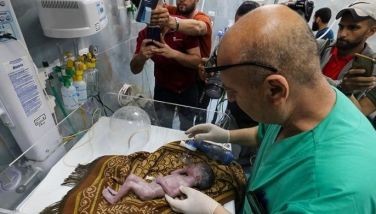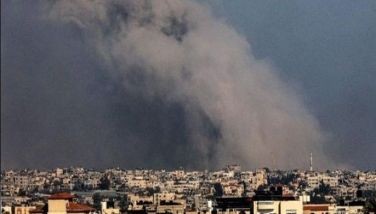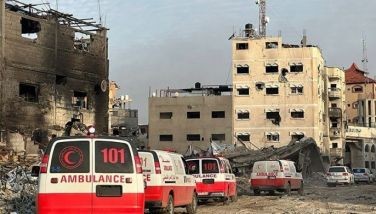Health groups say AIDS No. 1 killer of adolescents in Africa
NAIROBI — The 16-year-old Kenyan girl found out she was HIV-positive and pregnant at a clinic in the Korogocho slums two years ago. She still isn't sure how she contracted the virus — her mother died from AIDS-related complications when she was six years old, and she slept with various men after dropping out of school years ago to provide for herself and her two younger sisters.
"I have no expectations in life. All I want to do is look after my daughter (who is HIV-negative) but death is imminent... and is what I am waiting for," said the girl, who spoke on condition of anonymity because of her age and to avoid stigma in her community.
Global health organizations said yesterday that AIDS is now the leading cause of death for adolescents in Africa, and the second leading cause of death among adolescents globally. Road accidents and injury are the number one killer of adolescents globally, said Michael Hollingdale, a UNAIDS spokesman.
About 120,000 people aged between 10-19 years died of AIDS-related illnesses in 2013, the eight international organizations said while launching a global campaign in Kenya to stem the spread among adolescents.
Adolescent girls, particularly in sub-Saharan Africa, are most affected, said the organizations which included UNAIDs, UN children's fund, World Health Organization and the US President's Emergency Plan for AIDS Relief or PEPFAR, among others.
In South Africa in 2013, more than 860 girls became infected with HIV every week, compared to 170 boys, they said.
Girls are more vulnerable because of physiological factors that see them more susceptible to infection, said Dr. Lilian Otiso, director of services at LVCT Health, an NGO that deals with AIDs prevention and treatment across Kenya.
Social-economic factors that see girls having sex at younger ages than their male peers also play a major role, she said. They might date older men who can provide for them, she said. Others, such as the 16-year-old, are forced to fend for themselves at young ages and become victims of sexual exploitation, abuse and rape, Dr. Otiso said.
"I cannot know how I contracted the virus. I had many boyfriends. I was with those boyfriends because life forced me to that situation because I was looking to survive so I was forced to do so," said the Kenyan girl.
The global campaign, called "All In" will seek to address the imbalance by encouraging strategic changes in policy and involving more young people in the effort, the organizations said.
Most of the 2.1 million adolescents living with HIV in 2013 became infected at least 10 years ago, the organizations said. Their mothers were pregnant and delivered at a time when anti-retroviral medicines that can greatly reduce the possibility of HIV transmission were not available, the organizations said.
Adolescents often don't come forward for testing and drop out of treatment regimes because their emotional needs aren't targeted, said Dr. Otiso.
UNAIDS said it aims to reduce HIV infections in adolescents by 75 percent, and AIDS-related deaths by 65 percent by 2020 by providing more counseling as well as education outreach to a targeted adolescent age-range in globally.
The girl from Korogocho said she now attends counseling classes at the LVCT center in Korogocho, which have changed her perception of HIV and AIDS.
"I used to do anything for money. Now my mindset has greatly changed. I wash clothes for people for a living," she said.
- Latest
- Trending






























